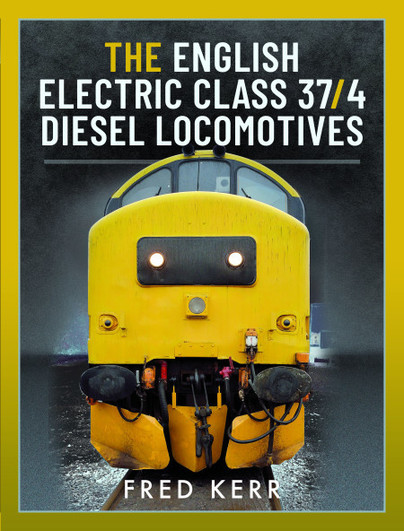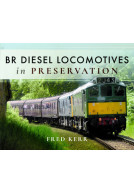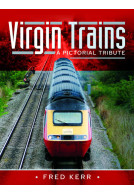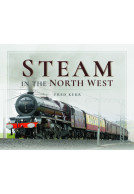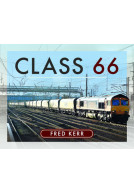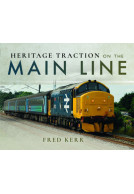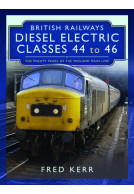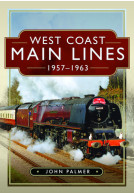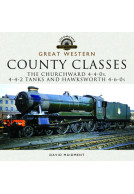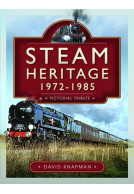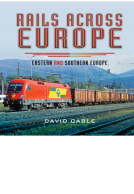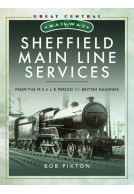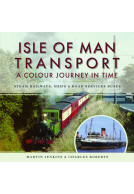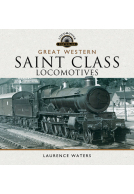The English Electric Class 37/4 Diesel Locomotives (Hardback)
Imprint: Pen & Sword Transport
Pages: 128
Illustrations: 250 colour pictures
ISBN: 9781399096133
Published: 19th July 2022
(click here for international delivery rates)
Order within the next 11 hours, 5 minutes to get your order processed the next working day!
Need a currency converter? Check XE.com for live rates
In the prelude to the privatisation of BR the Provincial Sector (later Regional Railways) became responsible for local / secondary train services and initiated the refurbishment of 31 Class 37 locomotives, fitted with train heating equipment – hence designated Class 37/4 - to support the shortfall of DMU trainsets. Their initial task was to work services on Scottish lines radiating from Inverness to points north and Glasgow to service the West Highland Line with a small batch based in South Wales to service Cambrian Line services and services from Cardiff traversing the Marches Line to serve Liverpool.
These services were soon replaced by Sprinter trainsets thus releasing the fleet to other duties including freight operators hence, at privatisation in April 1994, the fleet became owned by freight companies who subsequently hired locomotives to both other freight companies and passenger operators.
Throughout their working life the fleet members have proved invaluable and capable of powering a variety of services whose history confirms both the locomotives’ adaptability and prowess in handling the duties allocated to them.
Fred Kerr’s book seeks to show this adaptability by detailing the reason for their initial creation and the tasks successfully undertaken once released from their initial roles as support for the shortage of DMU trainsets. The advent of privatisation saw an increased demand for their ‘go-anywhere do anything’ ability which is also displayed by the range of photographs that illustrate the wide range of duties performed by class members.
Once withdrawn from service some class members were purchased for preservation and – such was their adaptability – that preserved examples were hired by train operators to cover duties that no other class of diesel locomotive was capable of achieving.
As featured by
The Broad Gauge Society
Fred is without doubt a very competent photographer and his record of these locomotives at work is first rate.
Bradford Railway Circle
All in all, a very good photographic record, well worth a read.
Featured in
The Railway Correspondence and Travel Society, The Railway Observer - March 2023
A fleet of 31 Class 37s underwent refurbishment during 1985-6, emerging with electric train heating equipment for use on regional passenger services. Commissioned by British Rail’s Provincial sector, the locomotives were required for services on the Far North and West Highland lines in Scotland, plus the Welsh Marches and Cambrian lines, in lieu of second-generation diesel multiple units, which were not due to enter service until the 1990s.
Model Rail Magazine
The ’37/4’ sub class become a firm favourite with enthusiasts and operators, retaining their usefulness throughout the ensuing decades, with numerous examples still in mainline use today. Fred Kerr’s new hardback book showcases the fleet on many of their traditional stomping grounds in Scotland, Wales and England. That said, the coverage largely misses those first few years of operation (perhaps the ‘golden’ years for most enthusiasts), with most images depicting post-1990 workings.
Indeed, the Scottish Highlands barely figure, and the coverage of the Cambrian lines is modest, but there are plenty of images of ‘37/4s’ at work on Manchester-Southport/Blackpool ‘club’ trains in the late 1980s and early 1990s, plus post-privatisation work on the South Wales Valleys services. Other key top-and-tail ‘37’ jobs are covered from the past two decades, on the Settle-Carlisle and Cumbrian Coast (but not East Anglian services), while charter and freight workings are also studied.
There’s a pleasing variety of liveries to admire and the quality of photography is high, as is the reproduction and paper quality. Very little technical detail is provided, this being more of a photographic survey, but it will prove useful for modellers looking for detail and livery information, as well as offering an insight into Class 37/4 operations over the years
"This is an excellent pictorial record."
West Highland News - Autumn/Winter 2022. Friends of the West Highland Lines
As featured in
Rail Express
Some great views of this iconic workhorse of the UK railways
James Simmonds
About Fred Kerr
Fred Kerr is a photographer whose lifelong interest in railways began in Edinburgh during the early 1950s and has continued throughout his life since. His family move to Northamptonshire in 1956 introduced him to the Midland Main Line where the transition from steam to diesel traction became important as Derby Works reflected the change with new locomotives being tested and introduced to service. His early ventures into photography began in 1961 but became established during his University years in the early 1970s. Taking early retirement in 1994 he has spent time working for Colin Garratt, a muse whose inspiration provided opportunities to photograph railway scenes that have proved to be historic as the railway undergoes changes in both its structures and operations.







